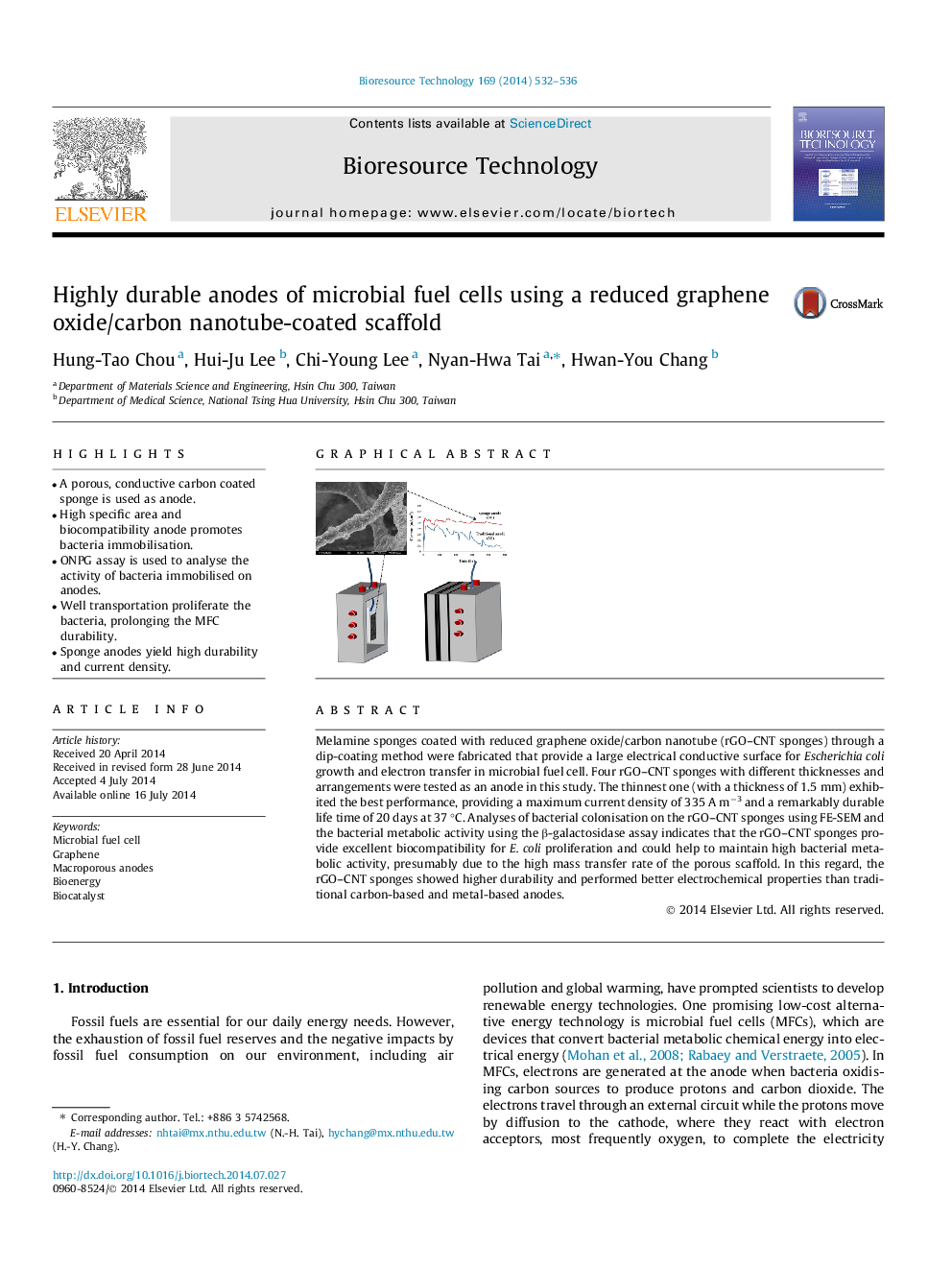| کد مقاله | کد نشریه | سال انتشار | مقاله انگلیسی | نسخه تمام متن |
|---|---|---|---|---|
| 680653 | 1459974 | 2014 | 5 صفحه PDF | دانلود رایگان |
• A porous, conductive carbon coated sponge is used as anode.
• High specific area and biocompatibility anode promotes bacteria immobilisation.
• ONPG assay is used to analyse the activity of bacteria immobilised on anodes.
• Well transportation proliferate the bacteria, prolonging the MFC durability.
• Sponge anodes yield high durability and current density.
Melamine sponges coated with reduced graphene oxide/carbon nanotube (rGO–CNT sponges) through a dip-coating method were fabricated that provide a large electrical conductive surface for Escherichiacoli growth and electron transfer in microbial fuel cell. Four rGO–CNT sponges with different thicknesses and arrangements were tested as an anode in this study. The thinnest one (with a thickness of 1.5 mm) exhibited the best performance, providing a maximum current density of 335 A m−3 and a remarkably durable life time of 20 days at 37 °C. Analyses of bacterial colonisation on the rGO–CNT sponges using FE-SEM and the bacterial metabolic activity using the β-galactosidase assay indicates that the rGO–CNT sponges provide excellent biocompatibility for E. coli proliferation and could help to maintain high bacterial metabolic activity, presumably due to the high mass transfer rate of the porous scaffold. In this regard, the rGO–CNT sponges showed higher durability and performed better electrochemical properties than traditional carbon-based and metal-based anodes.
Figure optionsDownload as PowerPoint slide
Journal: Bioresource Technology - Volume 169, October 2014, Pages 532–536
